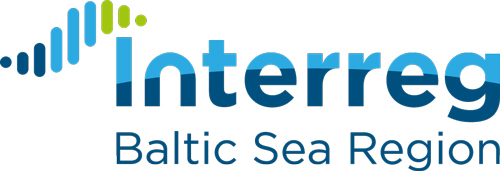Professionals and students from 3 countries train Search and Rescue together in the European Maritime Simulator Network
The European Maritime Simulator Network (EMSN) allows simulators of different brands at various sites to be connected. Joint exercises can be performed by people in different countries in real time. In October the EMSN was used for the first time for joint training in Search and Rescue (SAR) among professionals from different organisations and students, from three Nordic countries.
Representation from the Swedish side consisted of two units from the Swedish Coast Guard, eight persons from the Swedish Sea Rescue Society (SSRS), four persons from the Joint Rescue Coordination Centre (JRCC) within the Swedish Maritime Administration, and four lecturers from Chalmers University of Technology. SSRS and the Coast Guard are the two main surface-based Search and Rescue actors in Sweden. From Turku, Finland, eight students manned the bridges and in Rørvik, Norway, professional mariners conducting a certificate revalidation course participated. One of the units from the Swedish Coast guard manned the ship Fure West and one of the crew was appointed as the On-Scene-Coordinator by JRCC. Helena Jansson of the Swedish Coastguard was one of crew on board Fure West.
“It was an interesting and rewarding exercise. The Swedish Coast Guard is often appointed OSC in SAR cases but as I work at one of the coastguards’ smaller vessels these searches mainly involve small pleasure boats, which can quickly manoeuver and change direction. However, coordinating a search among 13 large commercial vessels, like tankers, requires another way of thinking because of their sheer size.”
Andreas Arvidsson of the Swedish Sea Rescue Society sees several advantages in using different organisations, units and nationalities in SAR simulations.
“To connect different entities in this way is really exciting; you get a very realistic exercise with different dialects, language problems and audibility issues on the VHF.
At 10:30 the 225-metre bulk carrier Hermes finally found a person in the water straight ahead of the ship. The person was alive and waved in response. At 10:32 a MOB boat was prepared for launch. JRCC ordered the helicopter unit to stand by and shortly afterwards the man over board could be taken into the MOB boat, cold but alive.
During the debriefing following the exercise, the lessons learnt were discussed and summarised. All participants had been well prepared and the exercise was conducted in a satisfactory manner. Radio communications worked well but could be further improved by using shorter messages and adhering to correct terminology. With the involvement of more countries and nationalities in SAR operations, this will be even more crucial to avoid misunderstandings.
The exercise in brief
Participating centres:
• Chalmers University of Technology, Gothenburg, Sweden
• Swedish Maritime Administration, Gothenburg, Sweden (Bridges and JRCC)
• Aboa Mare, Turku, Finland
• Rørvik Sikkerhetssenter, Rørvik , Norway
Participating organisations:
• Swedish Coast Guard, crews from two units
• Swedish Sea Rescue Society, crew from rescue ship Hovås and the SSRS headquarters
• Chalmers University of Technology, lecturers
• Aboa Mare, students
• Rørvik Sikkerhetssenter, professional officers conducting license revalidation course







